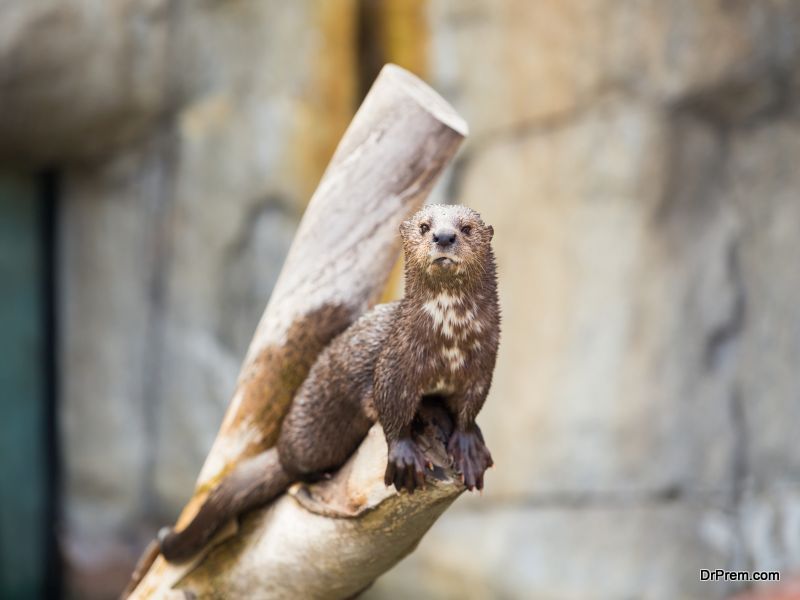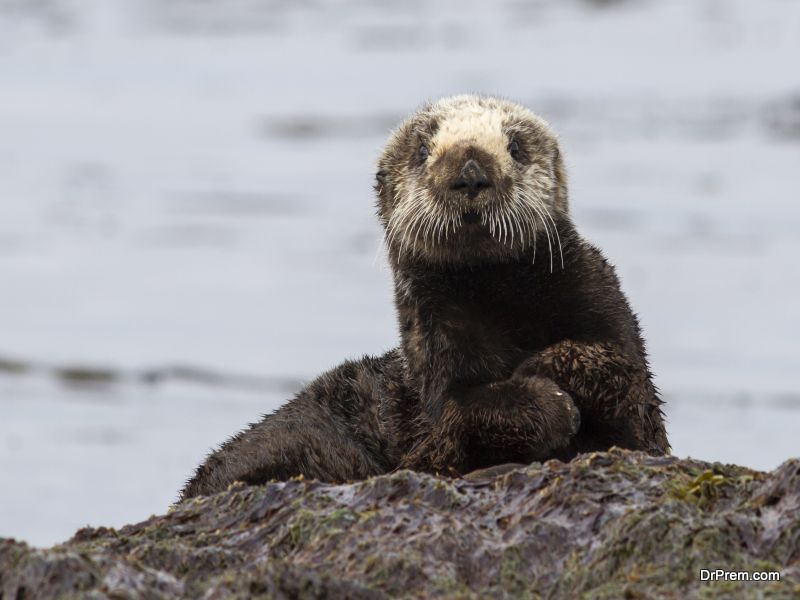Sea otters are undeniable charismatic and have captured the imagination of people worldwide. You must have come across cute photos of these playful and intelligent animals, as they frolic in their natural habitat. Did you know that they are social and friendly creatures and can form groups which consist of dozens of sea otters? The largest group of sea otters recorded was 2,000! They’re also good for the environment as they feed on sea urchins which feed on kelp, thus helping carbon-absorbing kelp forests to flourish. Read on to find out 10 amazing facts about sea otters:
They use tools
Sea otters can use tools like empty shells and rocks, just like primates, to pry open crabs, snails, mussels and sea urchins to eat the meaty interior. They use stones to scrape abalone from rocks to eat as a tasty snack.
They have the thickest fur
Out of all mammals, a sea otter’s fur is the thickest. It consists of a top layer which is waterproof and an underlayer, which may contain up to million hairs per inch. They need this hair as they do not have blubber to protect them from the cold water of the Pacific Ocean. It makes it quite difficult to groom all the fur. Mother sea otters groom themselves as well as their pups.
They have to keep their fur squeaky clean
Sea otters have to have squeaky clean fur as it has to retain the air bubbles which keep them warm. This is why they find it difficult to survive if they fall prey to oil spills – they would not be able to clean their fur and so die from hypothermia.
Sea otters have been known to hold paws / hands
Sea otters hold their paws (or hands) so that they would not drift apart and float away further out into the ocean. Mothers hold their pups’ paws to keep from drifting away. Sea otters use kelp to anchor themselves while sleeping, and this smart strategy also helps them sleep peacefully without any worries.
They have enormous appetites
A sea otter has a very fast metabolic rate, the reason why it has to eat almost 11 kg, i.e. one quarter of the body weight every day. After giving birth, a mother sea otter’s food requirement increases by about 17%. They spend upto 5 hours looking for food.
They are dedicated mothers
Most sea otter females have just one pup at one time, and give birth in water. They feed the pup milk, and teach their young one to hunt for food till it is 5-8 months old, and can look after itself.
They are slow swimmers
Otherwise extremely agile, sea otters are lazy swimmers. They prefer to be on their backs in water, and flip over to their front only when they require speed. To propel themselves and undulate the body, they make use of webbed feet. The most common photos on the web are that of sea otters floating on their backs, holding hands.
They were almost extinct
Sea otters were hunted for their thick fur and were almost extinct. The International Fur Seal Treaty of 1911 stopped the hunting of sea otters. Only about 50 of them were remaining in Big Sur in 1938, but their population is now close to 3,000.
They are considered a keystone species
Sea otters are a keystone species as the keep the ocean’s ecosystem healthy and balanced. They eat sea urchins which destroys kelp forests. Kelp is necessary for the ocean’s eco-system as it absorbs carbon and is food for many sea creatures. Sea otters eat the sea urchins helping to save the kelp forests and the many species that depend on kelp.
They are social animals
They are polygynous animals. Pups and mothers are mostly solitary animals but sea otters can form groups sometimes consisting of a few dozen of them. As mentioned before, a group of 2,000 is the largest group of sea otters ever recorded.
While looking at photos and videos of these adorable animals, we often forget that they face many threats. These amazing sea animals’ environment needs to be protected so they never have to face extinction again.






